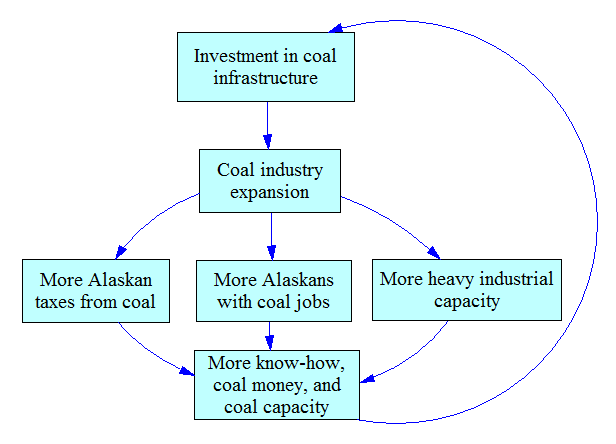Self-Reinforcing Investment

In this flow chart, arrows indicate the flow of effects. The system is circular: Coal development drives more coal development. This cycle must be driven by economics; the industry is self-sustaining as long as coal is profitable enough to pay for immediate operating costs of coal miners and transporters. Where the industry is infrastructure-limited (for instance, by export terminal capacity), it can expand if it generates enough additional revenue to cover costs of adding more infrastructure. Alternately, it can expand if it covers the (frequently much lesser) cost of political lobbying for public investment in the needed infrastructure.
If the coal is only profitable enough to pay for the immediate operating costs and selling activities, then the industry will tend to remain constant in size, or grow organically to fill the capacity of existing infrastructure capacity, but it will grow no larger unless it is subsidized in some way (such as by public funding of infrastructure.) Conversely, an otherwise self-sustaining or even growing industry can be made to shrink by imposing large additional costs, such as heavy taxes, or by internalizing costly environmental and social externalities.